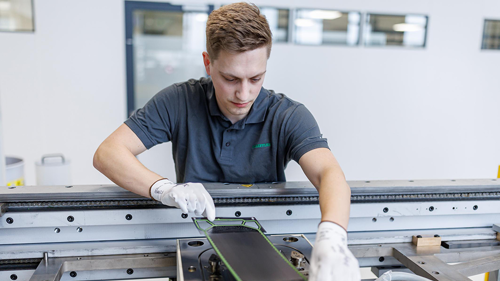Discover a new generation of metallic bipolar plates with a power density around 20 per cent greater than the previous.
Schaeffler joined forces with Symbio last year in a new venture into the field of hydrogen-powered mobility. This year they are bringing newly designed bipolar plates optimised for large-series production, leveraged with an advanced coating process for long fuel cell life.
Matthias Zink, CEO of Automotive Technologies at Schaeffler AG announces that “When it comes to drive systems for commercial vehicles, Schaeffler is also investing in hydrogen, especially for long-haul applications. We are developing both individual components and complete subsystems for fuel cells and are gearing up for their full-scale industrialisation.”
Head of E-Mobility, Dr. Jochen Schroder draws further insight to the new plate design explaining that “Schaeffler has developed an innovative design that makes optimal use of the plate’s surface area” for maximum efficiency.

Schaeffler will also tailor the high performance coating systems used on the plates to meet specific customer requirements. Dr. Jochen Schroder goes on to explain that “this means that we can meet each customer’s requirements in terms of balancing cost, performance, and manufacturing related CO2 emissions.”
Thanks to its systems expertise, Schaeffler is also able to partner with customers to develop customised bipolar plates and components for fuel cell systems. Schaeffler is due to start production of bipolar plates under the name of Innoplate, a joint venture with Symbio, in Haguenau, France, at the start of 2024.
To read more about the unique features and potential applications for the new bipolar plates, click here: www.schaeffler.co.uk











Water Sector Talent Exodus Could Cripple The Sector
Maybe if things are essential for the running of a country and we want to pay a fair price we should be running these utilities on a not for profit...